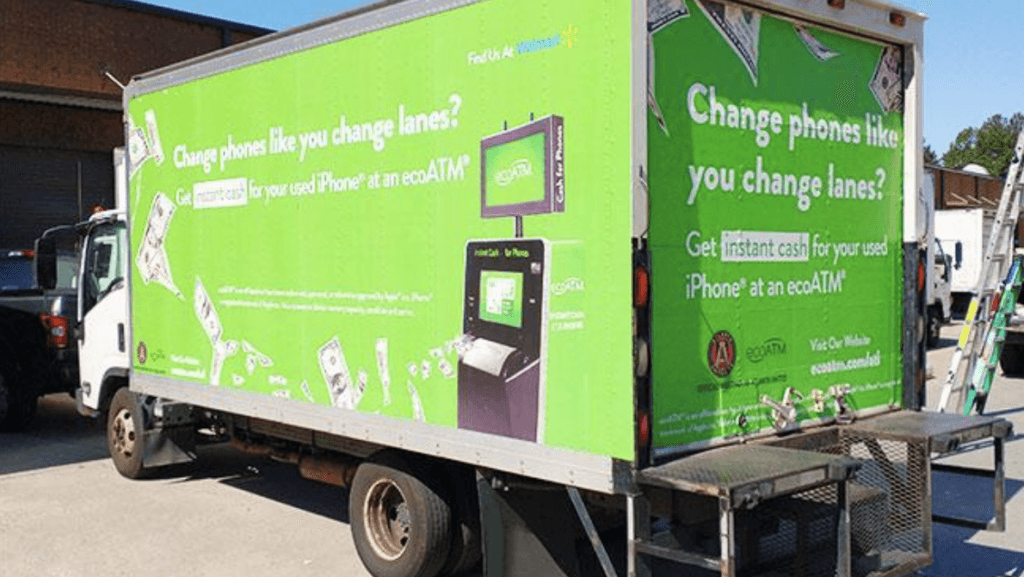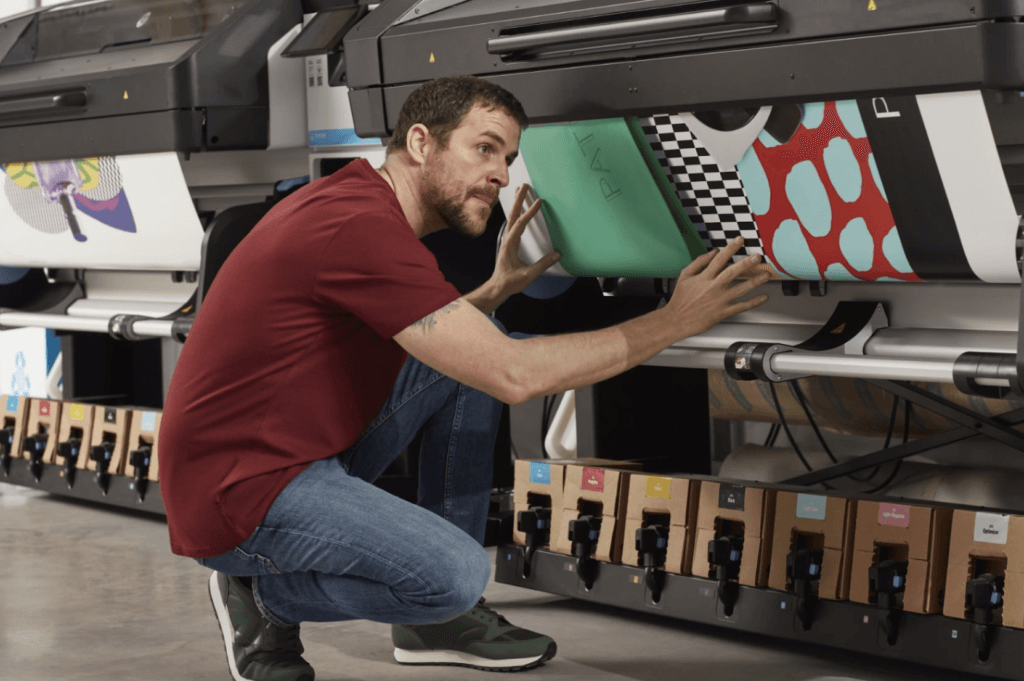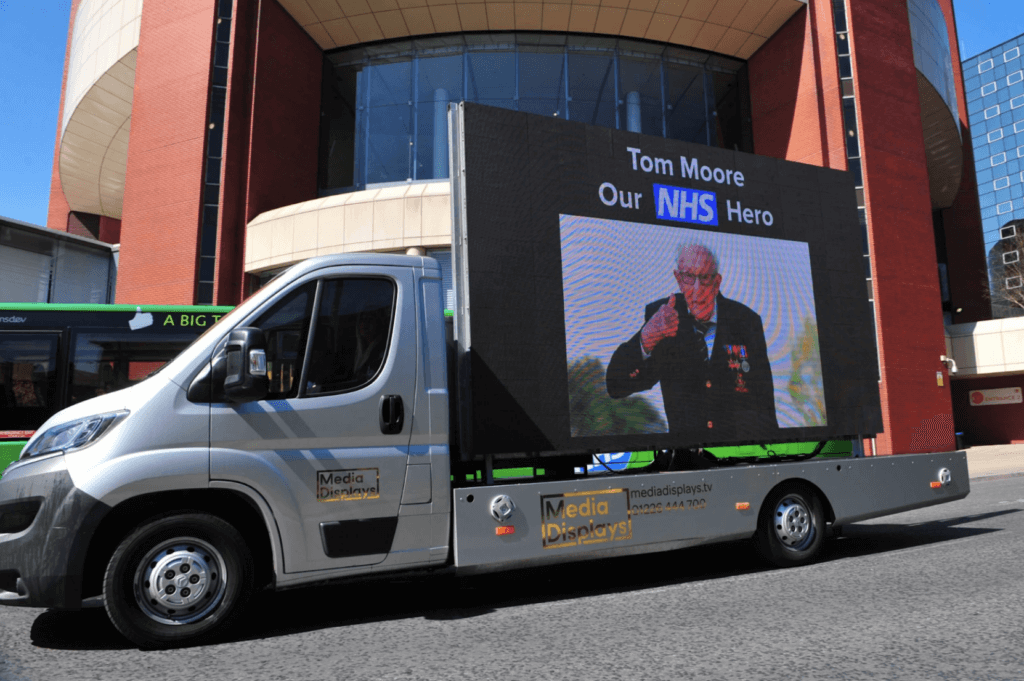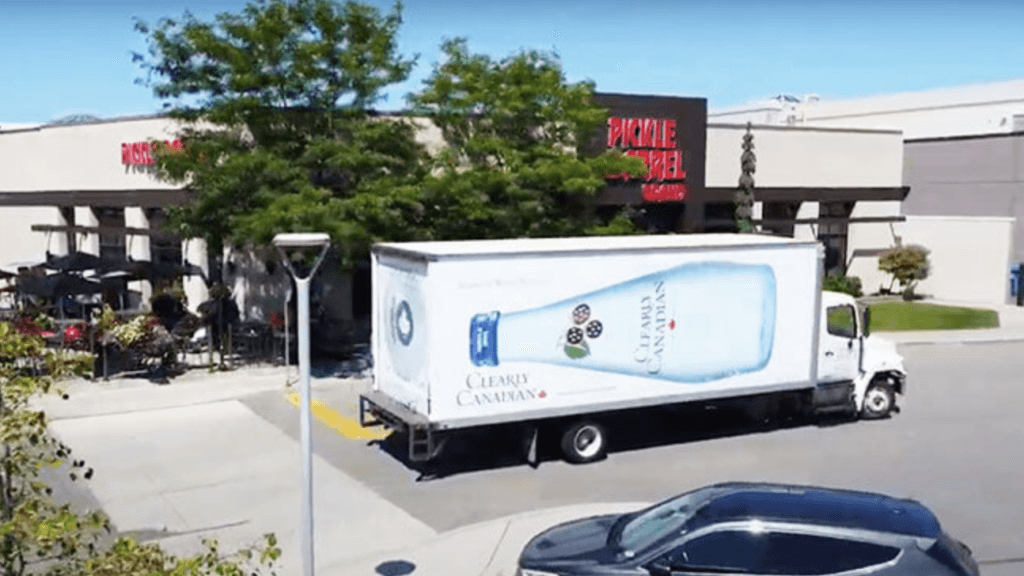By Sam Marasigan and Rose Sugatan
In 2023, sustainability has taken center stage in many industries, including advertising. Sustainable advertising means doing things in a way that reduces negative environmental impact, saves resources, and shows social responsibility. Brands are now vying for innovative methods to enhance the eco-friendliness of their advertisements—and this is where sustainable truck advertising comes into play.
Truck advertising can contribute to sustainability efforts with eco-friendly advertising methods, such as through utilizing existing commercial vehicles and repurposing existing assets. With this kind of advertising, you have the opportunity to form targeted route planning, optimizing the reach and reducing unnecessary mileage.This approach helps minimize fuel consumption and carbon emissions linked with advertising campaigns.

Image Source: movia.media
“A digital billboard that’s on the side of the highway uses 20 times as much electricity as a single house does,” Movia Media CEO Casey Binkley tells Modern Wellness Guide. He states that big digital billboards actually have an approximate lifespan of about 10 to 12 years until their materials have to be recycled.
Sustainable truck advertising stands out from traditional approaches by leveraging existing resources like commercial vehicles, minimizing environmental impact. It provides flexibility in targeting specific areas and demographics, optimizing efficiency. Choosing eco-friendly materials and practices, such as digital displays and renewable energy sources, further reduces the environmental footprint. When advertisers opt for sustainable materials and printing techniques in their truck advertising, they efficiently cater to the preferences of eco-conscious consumers while driving positive change.
Sustainable Printing Options
In sustainable truck advertising, it begins with the choice of materials and printing techniques. Opting for eco-friendly materials, such as recycled resources or biodegradable inks, reduces the environmental impact of the advertisements.

Image Source: hp.com
Large-format latex printers, in particular, use water-based inks that are non-toxic, odorless, and have a lower environmental impact compared to solvent-based inks. These eco-friendly inks contain minimal volatile organic compounds (VOCs), contribute to improved air quality, have certifications indicating their low emissions, and are weather-resistant for up to six years. Latex printers are energy-efficient and utilize advanced curing technology, reducing energy consumption. Prints made with latex inks are recyclable, promoting sustainable waste management. The versatility of latex printers makes them suitable for various applications, and their eco-friendly inks align with the growing demand for sustainable printing solutions.
Energy-Efficient Lighting Solutions
Energy-efficient lighting, particularly LED lights, is a good choice for minimizing environmental impact. LED lights offer significant energy savings compared to traditional alternatives while maintaining vibrant and visually appealing advertisements. They consume less electricity, making them highly efficient and attention-grabbing. LED lights also have a longer lifespan, reducing the need for frequent replacements and lowering overall energy consumption. With improved durability and reliability, LED lights are well-suited for outdoor advertising, enduring harsh weather conditions and ensuring consistent illumination for truck advertisements.
In contrast, older types of electrical lights called high-intensity discharge (HID) lights have a lengthy warm-up period when turned on, as the material inside them needs time to evaporate into plasma. These lights are used for some OOH advertising applications and result in a higher voltage requirement during the warm-up period. HID lights also contain toxic materials and require special disposal procedures when broken or at the end of their lifespan. Moreover, HID lights become less efficient over time as their lighting quality deteriorates. LED lights, on the other hand, are easy to dispose of and fully recyclable, eliminating the need for special handling. They can be taken to standard recycling centers without any additional considerations.
Digital Displays That Reduce Waste
Digital displays have revolutionized truck advertising by offering a dynamic and eco-friendly alternative to traditional printed advertisements. Advertisers can create visually captivating and customizable content that can be remotely updated, ensuring fresh and relevant messaging. This technology not only enhances the impact and versatility of truck advertising but also delivers significant sustainability benefits. Digital displays reduce printing and paper waste, allow for targeted messaging, and provide interactive and immersive experiences, making them an attractive option for brands looking to minimize their environmental impact and align with eco-conscious values.

Image Source: thestrayferret.co.uk
From 2001 to 2019, global deforestation resulted in the loss of 386 million hectares of forest, equating to a nearly 10% decrease in tree cover since 2000. A significant portion of wood harvest, approximately 42%, is used for paper production. However, businesses contribute to paper waste as printed materials like posters and flyers often go to waste and end up in landfills, releasing the environmentally harmful methane gas during decomposition. Sustainable digital truck signages offer a solution by utilizing multimedia features and high brightness to capture attention and effectively communicate messages to target audiences. This shift to digital communication not only reduces deforestation and illegal logging but also conserves water, as it takes 50,000 liters of water to produce 10,000 sheets of paper. Sustainable truck digital displays proves to be a greener, cleaner, and more cost-effective alternative to mass paper usage, contributing to the preservation of the planet.
Eco-Friendly Collaborations
Collaborating with like-minded, eco-friendly brands can amplify the messaging and impact of sustainable truck advertising campaigns. When companies form partnerships with other companies that share similar values and commitments to sustainability, they can enhance the credibility and effectiveness of their messaging. These collaborations not only demonstrate a collective effort towards sustainability but also foster a positive image for both the brands involved and the advertising campaigns. When eco-friendly brands join forces, they can create a powerful and unified message that resonates with audiences and reinforces their commitment to environmental responsibility.

Image Source: movia.media
When collaborating with environmentally conscious companies, sustainable truck advertising must go beyond promoting brands and products and offer a unique opportunity to drive positive social and environmental change. By dedicating ad space to raise awareness about important issues and supporting charitable organizations, advertisers can utilize their platforms to make a meaningful impact. Whether it’s advocating for environmental conservation, social justice, or community initiatives, sustainable truck advertising has the power to amplify and amplify meaningful messages. When brands align their campaigns with social and environmental causes, they can engage audiences, inspire action, and contribute to a better and more sustainable future.
Net-Zero Emissions
In the realm of sustainable advertising, net-zero emissions truck advertising campaigns have emerged as a powerful and effective means to promote brands while minimizing environmental impact. One example showcasing this innovative approach to sustainability is the work we’ve carried out here at Movia. When you choose our out-of-home advertising services, you not only opt for an impactful marketing strategy, but also actively contribute to net-zero emissions. We have strategically partnered with delivery trucks that are already on the road, diligently following their scheduled routes. This unique collaboration ensures that we avoid adding any new CO2 emissions to the environment, allowing our trucks to fulfill a dual purpose. By harnessing the existing delivery infrastructure, Movia maximizes the advertising potential while minimizing the ecological footprint associated with traditional advertising methods.

Image Source: movia.media
This approach aligns with the growing trend in sustainable advertising, where companies recognize the need to address their environmental impact. Net-zero emissions truck advertising campaigns provide a win-win solution by enabling brands to reach their target audience effectively while significantly reducing their carbon footprint. Our commitment to leverage existing delivery routes exemplifies our dedication to sustainability and a proactive stance in combating climate change.
Choosing net-zero emissions in truck advertising lets businesses demonstrate their commitment to environmental stewardship and contribute to the broader movement toward sustainable practices in the advertising industry. This mindset not only resonates with eco-conscious consumers but also highlights the potential for creative solutions that prioritize both effective brand promotion and environmental responsibility.
Tree-Planting Initiatives
A commitment to mitigating environmental impact has become increasingly important in truck advertising. Many companies, including Movia, have recognized this and implemented robust offsetting strategies through tree-planting initiatives in collaboration with organizations like Trees for the Future and Highway of Heroes. This type of proactive approach helps to offset the production and operational emissions associated with truck advertising activities through reforestation efforts.
Pledging to plant 100 trees for every truck that completes four weeks of driving can effectively contribute to environmental sustainability. A tree-planting initiative such as this not only offsets emissions but also promotes reforestation and ecological restoration. To date, we’ve already planted 139,000 trees, a testament to our dedication to a greener future. We remain steadfast in our partnership with relevant organizations to help us in our goal of planting one million trees.
Environmental Benefits
Sustainable truck advertising plays a crucial role in addressing the environmental challenges associated with traditional advertising practices. When businesses actively try to reduce carbon emissions, the innovative solutions can align with global efforts to combat climate change. The ability to reach a wide audience while minimizing the carbon footprint makes sustainable truck advertising a more environmentally responsible choice.

Image Source: unsplash.com
One of the key environmental benefits from choosing this route lies in tree-planting programs. Companies that consciously invest in reforestation projects can better contribute to carbon sequestration, as trees absorb and store CO2 from the atmosphere. This offsets the emissions produced during the truck advertising campaign, effectively neutralizing its environmental impact and promoting a healthier planet. Next, going beyond offsetting emissions, sustainable truck advertising supports biodiversity, ecological restoration, and the overall health of ecosystems. Finally, creating partnerships with environmental organizations shows that a company has a firm commitment to environmental stewardship. These efforts contribute to enhancing air quality, conserving natural resources, and fostering a sustainable future.
Advantages of Being Eco-Conscious
Nowadays, when consciousness about saving our planet is on the rise, sustainable truck advertising resonates strongly with eco-conscious consumers. When brand messaging is in sync with sustainable practices, companies can capture the attention and loyalty of environmentally aware target markets. This engagement fosters a positive brand image and cultivates a loyal customer base that values sustainability.
Being ecologically conscious also allows businesses to showcase their commitment to corporate social responsibility (CSR). When engaging in environmentally friendly practices, companies communicate their dedication to making a positive impact beyond profit margins. This emphasis on sustainability enhances brand reputation, builds trust among consumers, and can attract partnerships with like-minded organizations.
Embracing sustainability can yield long-term cost savings for businesses, too. An effective method in reducing expenses associated with maintaining and operating a dedicated fleet of advertising vehicles is partnering with existing delivery trucks. Also, the use of eco-friendly materials, energy-efficient lighting, and targeted route planning can lead to reduced operational costs, while progressively reducing the environmental footprint.
Every brand wants to stand out from the crowd in a competitive advertising landscape. This is where sustainable truck advertising offers a unique selling point and differentiates businesses from their competitors. Companies that prioritize sustainability exhibit an open-mindedness and the willingness to adapt to evolving consumer expectations. This commitment to environmental responsibility can attract clients who prioritize sustainability and position the company as an industry leader in eco-friendly advertising solutions.

Image Source: unsplash.com
Conclusion
To sum up, sustainable truck advertising presents a powerful opportunity to blend effective marketing with environmental responsibility. Employing net-zero emissions strategies, partnering with existing delivery trucks, and offsetting emissions through tree-planting initiatives lets companies like Movia establish the positive impact of sustainable practices in the advertising industry.
The environmental benefits of sustainable truck advertising, such as reducing carbon emissions and contributing to reforestation, cannot be stressed enough. These efforts align with global sustainability goals and promote a greener future for generations to come. In addition, sustainable truck advertising offers irrefutable business advantages, including appealing to eco-conscious consumers, enhancing brand reputation, and realizing long-term cost savings.
As businesses continue to recognize the importance of sustainability, incorporating sustainable truck advertising into one’s brand identity and positioning becomes not only an ethical choice but also a strategic one. As sustainable practices are integrated into advertising strategies, companies can contribute to a healthier planet while reaping the benefits of increased brand recognition and consumer loyalty. The future of sustainable truck advertising holds immense potential to bring positive change not just in the advertising industry but to society as a whole, and businesses ought to seize the opportunity to participate—as this, then, becomes an important contribution to the possibility of a greener tomorrow for all.


